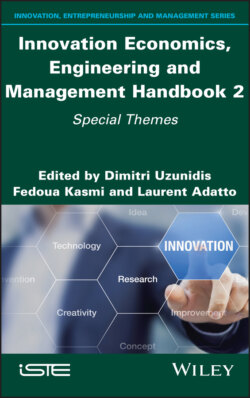Читать книгу Innovation Economics, Engineering and Management Handbook 2 - Группа авторов - Страница 21
2.3. Practical guide to innovation engineering
ОглавлениеInnovation processes have radically changed and must take into account the increasing capacity of industrial developments and the growing complexity of surrounding systems. The question of innovation has therefore emerged over time as a fundamental element that can reconcile two requirements: short-term efficiency in the control of an industrial process and long-term development that will reside in the capacity to create value (both in a human and a productive dimension). These changes in the understanding of the concept of innovation in general have naturally contributed to a new field of research: innovation engineering, whose role is to study the mutual involvement of the disciplines that feed into each other and to obtain knowledge that will become levers of growth for tomorrow’s economy.
Following the exercise of inventorying methods and tools in innovation engineering carried out in 2011 by a collective of researchers and practitioners in engineering techniques under the direction of B. Yannou (2011), we have chosen to take this work for granted and to focus on the accepted bases in the piloting of innovative projects. Moreover, starting from the observation that there is a more than sufficient number of definitions of innovation, we will base ourselves on the definition of innovation of the Oslo Manual, version 2018, taken up in the very recent ISO/TC279 standard on innovation management:
An innovation is a new or improved product or process (or combination thereof) that differs significantly from the organization’s previous products or processes5 and that has been made available to potential users (product) or put into use by the organization (process).
